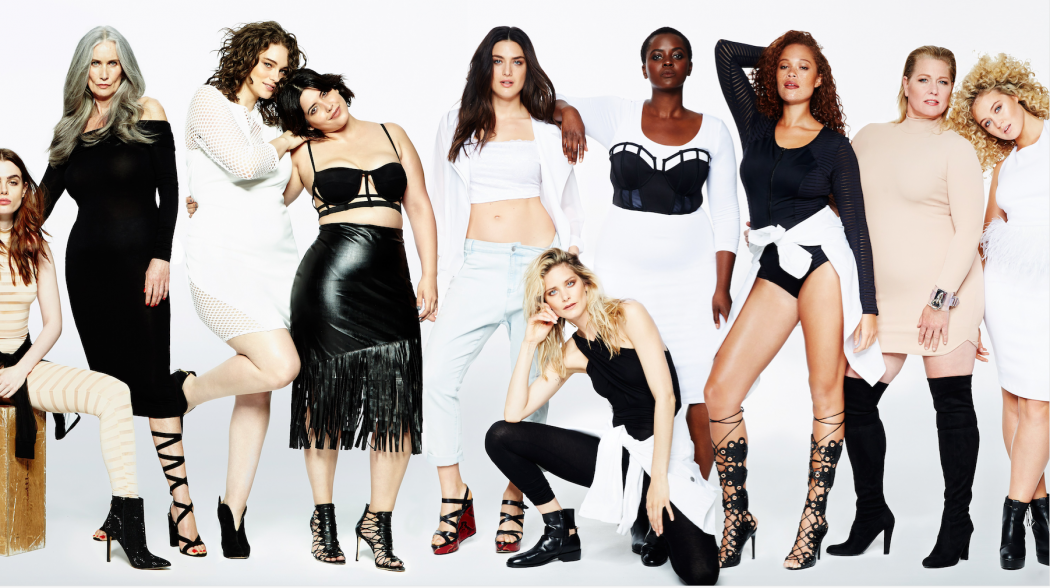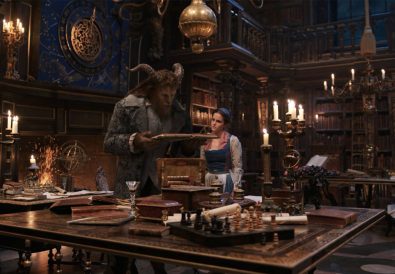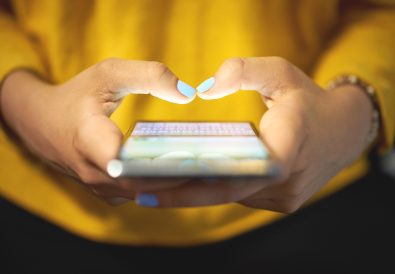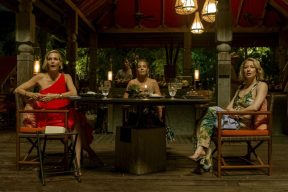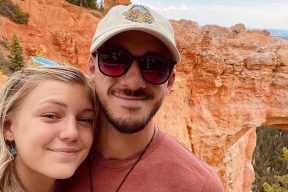Jessica Lewis has had the unique experience of modelling on both sides of the industry’s size spectrum: first as a straight size model (i.e. a size 2-4) and then as a curve model (size 12-14). She’s seen for herself what it’s like for models ” and women and girls in general ” to be pressured to look a certain way in order to be classified as beautiful. And she developed some pretty strong opinions on the matter along the way. This made her the perfect partner for award-winning director Jenny McQuaile, who had been studying the diversity movement from afar and wanted to explore the topic of body image in a tell-all insider documentary. She had been studying the rise of the curve model from an outsider’s opinion, but needed someone to get into the nitty-gritty, finer details on what was happening from within, Lewis explained. So that’s where I came in.
Lewis and McQuaile joined forces with film producer Yael Melamede to create the film Straight/Curve: Redefining Body Image, a new documentary that critically examines the fashion industry and showcases the inspiring game-changers who are fighting for the inclusion of more diversity in size, race, and age. Straight/Curve had its worldwide red-carpet premiere this summer in New York City, and is currently available for streaming online for American viewers on Hulu and Amazon. The Canadian release date will be announced soon, so keep your eyes on @StraightCurveNY for real-time updates.
In anticipation of the film’s release, I caught up with Lewis, who recently moved back to her hometown of Toronto from the U.S. to be near family ” she is the mother of a toddler boy named Wyatt and has a daughter on the way ” and to work on several projects, including the Canadian launch of Straight/Curve. Lewis is still modelling, but only on her own terms. I won’t work on projects that really go against what my morals and values are in this industry and what my vision is for this industry, she insists. Here, we discuss her experience as a model, her vision for what the fashion industry could and should look like, body diversity, and whether we should do away with the term “plus size.”

How did you get your start in the industry?
So I got into the fashion industry probably 20 years ago now as what is known as a straight size model. I was a size 2-4. And I did that with great success for a number of years. I did all the show circuits and worked the Asian, European, US and UK markets, both editorially and commercially. I did that for a number of years ” I’d say maybe 13, 14 years. I was in my mid-twenties, and I decided that I’d had enough and needed something new. So I took some time away from the industry, and I came back to it after a year or so as a plus size model. I was a size 12-14. I signed with a great agency in New York, and again did a lot of great commercial and editorial work as a curve model. I did that for probably four or five years, and then I was introduced to Straight/Curve’s director, Jenny McQuaile, who was looking for a fashion producer who could really speak to both the straight and curve aspects, as well as the catalogue and editorial sides of the industry. She proposed the idea of the documentary to me and I thought it was awesome. So that’s what launched my career as a producer, which is where I stand now.
What was your inspiration in making Straight/Curve, and what do you hope it achieves?It’s a very personal film to me, because essentially it really underlines the struggles and the issues that I had with the industry for so many years as a straight size model, especially as I started to venture beyond my teen years and my body naturally wanted to change a little bit and I was fighting that. It’s a very familiar story not just to many models, but also women and teenagers in general, especially with how impressed upon by the media that they are these days. I was inspired by my own journey and I wanted to share just how empowered I became when I discovered the world of curve modelling and how accepting it was. It really struck a chord with me, and opened my eyes to a new perspective on how our society can be.
As we were filming, we started to notice a huge shift in the conversation [about two and a half years ago] that was happening surrounding curve models. When we started on this film, the conversation was very much about utilizing both straight size and curve size models, and arguing that both of them had a place in the industry. Probably about a year into filming, I started to notice among my industry peers that the conversation was shifting quite quickly towards a conversation more about diversity and inclusivity. So it didn’t just stop at the body type conversation, it was now a conversation about race inclusivity, age inclusivity, so on and so forth. That was something that really shifted our perspective, and we said by the time the film comes out this is where the conversation will be at, at least in the markets that we were exploring ” New York and London, which are kind of the two leaders in this movement ” and where the conversation should be at in other markets as well. That’s kind of my hope for the film, that we introduce a new blueprint that could be applied to publications, brands, agencies, casting directors, whatever it is, about how you incorporate diversity and inclusivity, and how it can benefit you not just from a monetary standpoint, but from a social responsibility perspective as well.
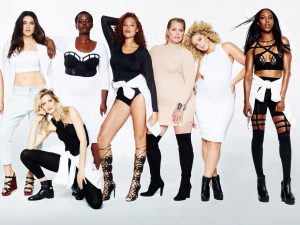
So how do you think this film compares in terms of its approach to this topic in comparison to other media that have covered it?
I can say this coming from many years in the industry: this is the first fashion insider film that has been done about the diversity movement. Whereas diversity has definitely had token moments over the past 30 ” some would say 40 years ” it isn’t something that has stuck. People who have been in the industry for 30 or 40 years, etc. will say that we have had moments in magazines or campaigns that have been diverse and inclusive. But that’s just the issue. They were moments. It’s like when, for example, you cast a runway show and you use one curve model or two curve models and use that as a marketing tactic to say we included these two curve models.
One of the goals of the film is to give women and girls the language to talk about issues like body image, implicit bias and representation. What advice would you give to people who have these things on their mind but might feel uncomfortable talking about it?
You know, when you asked me that question, I just put myself back into what I remember in junior high as a young, gangly, awkward girl. It’s a hard conversation to approach, I think, especially when you’re a preteen or teenager, which is why the educational component was so important to us. Obviously we want to do our network premieres and our red carpet premieres, but next on our list is education. I think that getting this language and this discussion into the curriculum that girls and even young boys are being taught is so integral. Really, I mean that’s the only way that they’re going to learn. We’re currently doing a great educational release actually that coincides with media literacy week which is happening November 6 in both the US and Canada, so we have a number of schools that are hosting screenings.
What is your stance on the debate around the term plus size, and should we do away with that label?
Even within the industry there are so many differing opinions on this. I mean, some of my best friends think we should do away with it, and then others are like, No, what are you talking about? We need it right now. I probably have to set myself with the party that’s saying that for right now, we do need it. Because it’s not that common a conversation yet, where if you were just to say to somebody that we need diversity, we need inclusion ” well, what does that mean? If we aren’t using the label plus size, straight size, inbetweenie, then what is diversity and inclusion? It’s my hope ” I would love, in another five or 10 years, for us to be able to just say the word diversity or inclusion and everyone already knows because it’s been taught to them by their school, or by the media, that that means people of all sizes, people of all races, of all ages. But the reality is, even the curve conversation is something that is so new to so many markets globally ” major markets ” that we still have a ways to go. I mean, I’m constantly humbled and reminded when I work in markets that are outside of New York City or London that this is the reality, and that we are very progressed in those two markets, especially New York City.
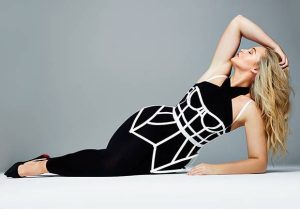
So on the Straight/Curve website there’s a statistic that says 90% of women and young girls say they do not feel represented by the fashion industry or media. That’s a crazy number. Is that referring to the US or North America?
That’s North America. I mean that’s another thing, I don’t think that much research has been done beyond North America on those specific stats, just because they don’t see it as a necessity. So for example, we work with the national eating disorder association in the States and they provided us with a lot of stats, and we work with the Self Esteem Fund. I think that there’s a lot of great organizations and initiatives that do see the value, and are invested in furthering this conversation, and know that in order to do that we have to get some hard stats. Those kinds of organizations aren’t really so much the norm in other countries yet. So it’s a little bit harder. But I would assume that they’re probably pretty similar, which is definitely a little frightening when you think of the fact that in the US and Canada we’re fortunate enough to have resources like the National Eating Disorder Association and in Toronto we have CAMH that people can reach out to. And you think about how in other countries like Paris, where there’s definitely curve women, they aren’t represented at all.
As a mother, is the place of maternity fashion and the pregnant body something that you think about, in terms of this whole conversation?
Yeah, absolutely. We don’t talk too much about that in the film. I personally have spoken out about it a number of times, and I definitely have a few collaborations coming up where we hope to introduce that. I think that for a lot of retailers, from a marketing perspective, they have a hard time putting too many resources into engagement on that conversation, because they say that it’s such a fleeting time in a woman’s life. But the reality is that there are so many women who are pregnant right now ” you know, we’re going through another baby boom ” that while it may be fleeting in one woman’s life, it’s happening to a majority of women who are in their late twenties, even up to early forties right now. I’ve definitely spoken out about authenticity when it comes to maternity images. I actually made a post on my Instagram the other day ” funny you ask about this ” because I had done a few maternity images for some clients and I posted one of them. Everyone was going Oh my God, you’re glowing, you look amazing. And of course in these images ” I mean they were Polaroids from the agency ” I had makeup on, I had my hair done, I was standing in great light, and I was posed properly. So then I made another followup post and said: You know, this isn’t an accurate representation of an eight-and-a-half-months pregnant woman who has a toddler and is a working mom. I was like, the majority of the time I have sallow skin, I have bags under my eyes, and I don’t look like society’s ideal of a glowing pregnant mama. And then I talked a little bit about the fact that a lot of maternity clients will use prosthetic bellies on a size 4, 19-year-old who has no idea what pregnancy or motherhood or working motherhood is. I definitely think there’s work to be done there.
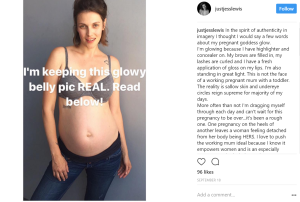
What do you hope to achieve over the next few years?
I’m just trying to bring this message of diversity and inclusivity to as many markets as possible. I think that New York and the States in general is really well on its way with this, so I’m really intrigued by markets that aren’t traditionally touched by the fashion industry ” or at least high fashion. So you know, Russia is one of them that I think doesn’t really get a lot of global attention from the fashion industry, and I’ve been working on that. Brazil is another one. You know, I’d eventually like to foray this message of female empowerment ” which is ultimately what this is ” out of the context of exclusively the fashion industry and the media. Because I recognize that while that’s very helpful in industrialized countries in the West, there is no fashion or media to speak of in underdeveloped countries. But the message that these industries have is still very relevant and powerful to women in under-developed countries. So that’s something that I’m working on.
Have you had a role model that you’ve looked up to?
Sara Ziff at The Model Alliance is a huge role model of mine and a great friend of mine. She founded the Model Alliance after she did the last fashion film that was called Picture Me, and that was about underage models being overworked in the industry, which is inevitably what led to her legislating and passing the laws surrounding working models and what age they have to be. The film’s director, Jenny McQuaile, is another awesome role model of mine, just because she doesn’t take no for an answer. We came up against so many roadblocks with this film”getting it financed, selling the story to people, finding a film producer”and she just wouldn’t take no for an answer.
One other person I’d like to note who is Canadian and is incredible, who really continues to inspire not only myself but numerous women who work globally in this industry is Lauren Chan at Glamour magazine. She started as a curve model and modelled in New York City and very quickly moved up the ranks, and is just an amazing, really authentic woman. She’s continuing to push the message of diversity and inclusivity through great platforms like the United Nations and has continually recommended a very diverse and inclusive lineup of models and game changers to feature in the magazine. And not only in the magazine, but on the cover of the magazine. Pretty much every curve model you see on the cover of the Glamour magazine is due to Lauren Chan.
Do you have any parting words of wisdom you’d like to share?
This is something that has been said to me by a number of people over the years, both as a producer and as a model. I think women ” and girls for the fact of the matter ” get told that anything is possible and that you can do and be anything. And that is true, but I think to put that into context, what you want to be doesn’t necessarily have to be something that is currently portrayed or publicized in the media or in the images that you see. It can be something that’s in your mind’s eye that you can make happen. You can bring it into existence. And I think that’s kind of a critical part of that message that is missing. I think that it’s more about finding the resources that you need to make that happen. Also, not being afraid to ask questions. Because you know, if you never ask, you’ll never know. So even if you may get nine “no’s” you might get a yes at the end of the day.
Ed’s Note: This interview has been edited and condensed. Main photo by Anastasia Garcia.

